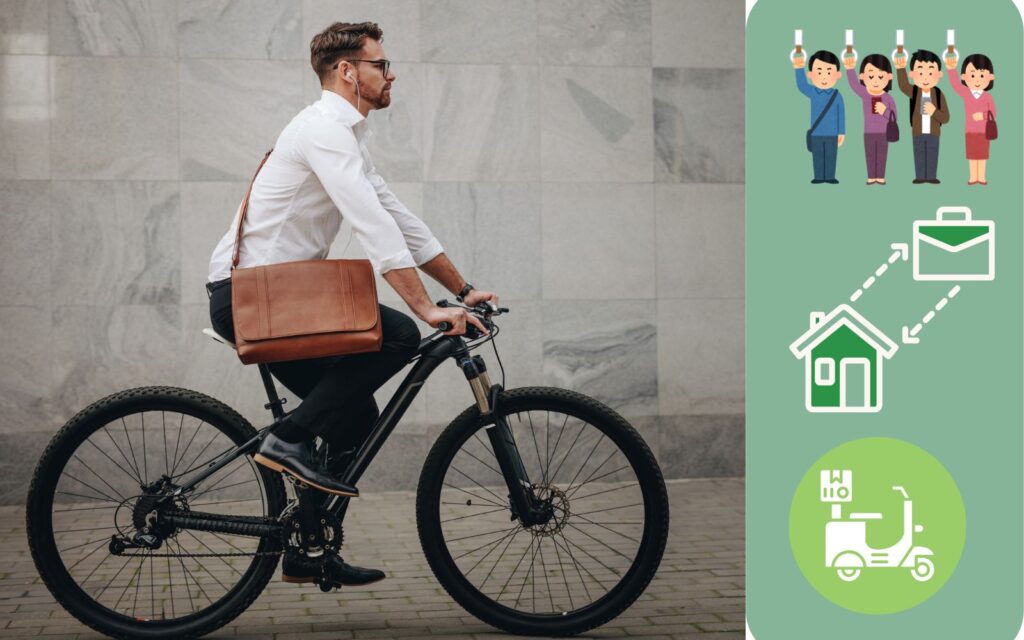Top Sustainable Commuting Tips for Employees to Reduce Their Footprint

Want to make your daily routine more eco-friendly and impactful? Your commute is a great place to start!
With simple shifts in commuting habits, employees can play an essential role in reducing carbon emissions, improving their health, and supporting their organization’s sustainability goals.
This article explores sustainable commuting tips for employees, covering practical solutions to improve your daily commutes for you and the planet.
Key Takeaways
- Discover a variety of sustainable commuting options to reduce your carbon footprint.
- Learn how to incorporate active commuting for improved well-being.
- Explore workplace strategies for supporting greener commuting habits.
Why Sustainable Commuting Is Crucial

Your commute has a direct impact on the environment. With fewer vehicles on the road, we can significantly reduce the use of fossil fuels and tackle climate change.
Choosing sustainable practices like public transport, cycling, or carpooling cuts emissions and brings health benefits like better physical activity and reduced stress levels.
Benefits of Sustainable Commuting:
- Reduce emissions: Lower the number of vehicles on the road.
- Improve health: Promote mental health and physical activity.
- Save money: Cut costs on fuel, parking fees, and maintenance.
Sustainable Commuting Tips for Employees

Let’s explore practical and achievable ways to commute sustainably while enjoying the added perks of well-being and savings.
1. Choose Public Transport
Public transportation like buses, trains, or subways is a simple and effective way to reduce emissions.
Why It’s Effective:
- Cuts down on fossil fuel consumption.
- Reduces vehicles on the road during rush hour traffic.
Pro Tips for Success:
- Take advantage of expanded bus routes in your area.
- Use apps like Citymapper to plan efficient trips.
2. Carpool with Colleagues
Carpooling is a great way to reduce the number of vehicles on the road while splitting costs with others.
Benefits of Carpooling:
- Share parking fees and fuel costs.
- Lessen rush hour traffic congestion.
How to Get Started:
- Use apps like Waze Carpool to find other commuters nearby.
- Create a rotating schedule to balance responsibilities.
3. Promote Walking and Cycling
Active commuting, which includes walking or cycling, is a healthy and environmentally friendly alternative to driving a car.
Why It’s Great:
- Produces zero emissions.
- Boosts personal health and reduces stress levels.
Make It Work for You:
- Invest in quality walking shoes or a sturdy bike.
- Look for cities with bike lanes to ensure safe travel.
4. Leverage Flexible Work Hours
Flexible schedules help employees avoid rush hour traffic, which not only saves time but also reduces emissions caused by idling in traffic.
Why It Helps:
- Less congestion during peak hours.
- Provides more control over your daily routine.
Ideas for Flexibility:
- Ask your employer to consider flexible hours or remote work days.
- Use lighter commute times to incorporate active transport options.
5. Advocate for Workplace Initiatives
Workplaces play an essential role in creating a culture of sustainable commuting.
Ways to Encourage Employees:
- Offer parking subsidies for greener commuting options like bike-to-work programs.
- Provide access to workplace shuttles or incentives for using public transit.
- Distribute informational materials to promote sustainability goals.
6. Drive Smart or Go Electric
When using your car, focus on reducing emissions through smarter driving habits or investing in a more sustainable vehicle.
Eco-Friendly Driving Tips:
- Maintain your car regularly to maximize fuel efficiency.
- Consider hybrid or electric vehicles to reduce your reliance on fossil fuels.
How Workplaces Can Encourage Sustainable Commuting

Employers can create a lasting positive impact by supporting sustainable commuting efforts among their teams.
Practical Ideas for Workplaces:
- Increase parking fees to discourage excessive driving and reinvest in sustainable initiatives.
- Provide covered storage for bicycles and showers for active transport enthusiasts.
- Partner with local transit authorities to offer discounts on public transit passes.
Summary
Shifting to a more sustainable commute benefits both you and the planet. Whether you choose public transport, bike to work, or work with your company to implement sustainable initiatives, every small change adds up.
You will reduce your carbon footprint, enjoy health benefits, save money, and contribute to a cleaner environment.
By adopting these sustainable commuting tips for employees, we can make greener choices and promote lasting sustainability goals.
Frequently Asked Questions
How Can Employees Start Commuting Sustainably?
Start small by using public transportation, carpooling, or incorporating active transport a few days a week.
What Are the Health Benefits of Sustainable Commuting?
Walking or cycling improves physical activity, reduces stress levels, and enhances overall mental health.
How Can Workplaces Support Sustainable Commuting?
Employers can offer incentives like parking subsidies, public transit passes, and dedicated bike lanes.
Are Electric Cars a Good Option for Sustainable Commuting?
Yes, electric vehicles reduce reliance on fossil fuels and have a lower environmental impact than traditional cars.
How Does Active Commuting Reduce Carbon Emissions?
Walking or biking eliminates private transport, reducing the number of vehicles on the road and lowering emissions.





